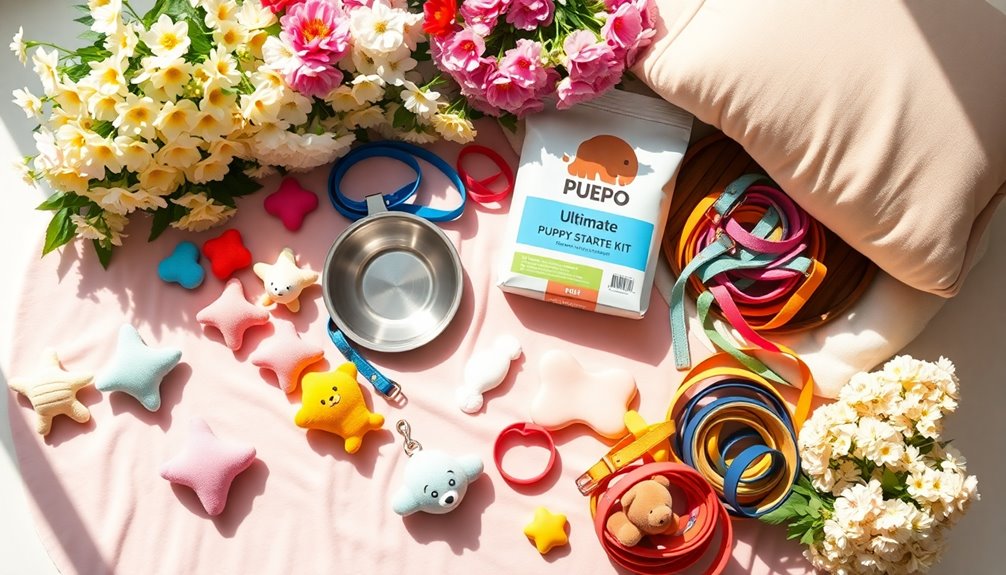Spaying or neutering your puppy offers health benefits like reducing certain cancers and preventing unwanted pregnancies. It can also lead to behavioral improvements, such as less roaming and marking. Timing varies—some pet owners choose early surgery, while others wait until your puppy is a bit older, based on advice from your vet. Considering cost, health, and behavior, making an informed choice helps guarantee your puppy’s happiness and long-term well-being. Keep exploring to understand more about when and why to decide.
Key Takeaways
- Spaying/neutering reduces certain health risks and unwanted behaviors, contributing to your puppy’s long-term well-being.
- The optimal timing varies; consult your vet to balance developmental health and behavioral benefits.
- Early procedures may prevent ingrained behaviors but could impact growth; waiting allows physical maturity.
- Costs differ based on location and services; consider long-term savings from fewer health issues.
- Behavioral improvements, such as less aggression and marking, develop gradually as hormonal changes occur.

Spaying or neutering your puppy is an important decision that can impact their health and behavior for years to come. One of the first factors you’ll want to consider is the cost considerations involved. The procedure itself can vary in price depending on your location, the size of your puppy, and the veterinarian you choose. Typically, spaying or neutering costs range from a few hundred to over a thousand dollars, especially if you opt for additional services like pain management or pre-surgical exams. While the upfront expense might seem steep, many clinics offer low-cost or subsidized programs to make the procedure more affordable. It’s also wise to factor in potential long-term savings, as spaying and neutering can reduce the risk of certain health issues, which could lead to lower veterinary bills down the line.
Beyond finances, it’s essential to understand that spaying or neutering can lead to significant behavioral changes. Many owners notice a decrease in behaviors driven by hormonal instincts, such as roaming, marking, and mounting. These changes can make your puppy easier to manage and can reduce the likelihood of aggressive tendencies or fights with other animals. Neutering male puppies often results in a calmer demeanor, less territorial aggression, and a reduced desire to escape in search of a mate. Spayed females tend to have less mood swings associated with heat cycles, which can lessen unwanted behaviors like yowling or trying to escape to find a mate. However, it’s important to remember that these behavioral changes aren’t instant; they develop over time as your puppy adjusts to the hormonal shifts following surgery.
Timing also plays a crucial role in these behavioral and health benefits. While some pet owners opt to spay or neuter their puppies as early as eight weeks old, others wait until they are a bit older, around six months, to allow for physical development. Early spaying or neutering can help prevent certain behaviors from becoming ingrained but may carry some risks related to growth and development. Conversely, waiting until your puppy is slightly older allows their body to mature, which might reduce surgical risks. Ultimately, balancing the timing with your veterinarian’s advice ensures you’re making the best choice for your puppy’s health and future behavior.
Deciding whether to spay or neuter your puppy involves weighing these cost considerations alongside the potential behavioral benefits. By understanding both aspects, you can make an informed decision that promotes your puppy’s well-being and helps shape a happier, healthier life for them.
Frequently Asked Questions
Are There Breed-Specific Considerations for Spaying or Neutering?
Yes, breed-specific considerations matter when spaying or neutering. Some breeds face breed-specific health risks like joint issues or certain cancers if altered too early. Additionally, breed-specific behavior considerations, such as guarding instincts or high energy levels, can influence timing decisions. Consult your vet to weigh these factors based on your puppy’s breed, ensuring the procedure supports their long-term health and behavior.
How Does Spaying or Neutering Affect a Puppy’s Growth?
Think of your puppy’s growth as a blooming flower. Spaying or neutering influences this process by affecting hormonal development, which can impact your pup’s growth impact. Typically, early spaying or neutering might delay some growth plates from closing, leading to slightly taller frames. However, the overall effect usually promotes healthier development, reducing certain risks. You can help your puppy flourish by timing the procedure thoughtfully and consulting your vet.
What Are the Costs Associated With the Procedures?
The costs associated with spaying or neutering your puppy vary, but you should do a thorough cost analysis to understand the financial considerations. Typically, the procedures range from $50 to $300, depending on your location and the veterinary clinic. Additional expenses may include pre-surgical exams, pain management, and post-operative care. Planning for these costs helps you budget effectively and ensures your puppy gets the necessary health benefits without unexpected financial strain.
Can Spaying or Neutering Prevent Certain Behavioral Issues?
Spaying or neutering can substantially help with behavior modification by reducing hormonal influences that cause issues like marking, aggression, or roaming. You might notice your puppy becomes calmer and less prone to certain behavioral problems after the procedure. By removing hormonal triggers, you support better social behavior and help prevent unwanted habits, making it easier for you to train and manage your puppy effectively.
Are There Alternative Sterilization Options Available?
Yes, there are alternative sterilization options available. You might consider hormonal implants, which release hormones to temporarily prevent fertility, or explore non-surgical sterilization methods like chemical injections that block reproductive capabilities. These options can be less invasive and may suit your pet’s specific needs. Talk to your veterinarian about the best non-surgical sterilization methods for your puppy, ensuring you choose a safe, effective approach.
Conclusion
Deciding whether to spay or neuter your puppy is like planting a seed for a healthier future. It reduces health risks and curbs unwanted behaviors, making life smoother for both of you. Timing matters, so consult your vet to find the best moment. Remember, this decision shapes your puppy’s journey—think of it as giving them a strong foundation to grow into a happy, balanced adult. Your choice today blossoms into their bright tomorrow.










